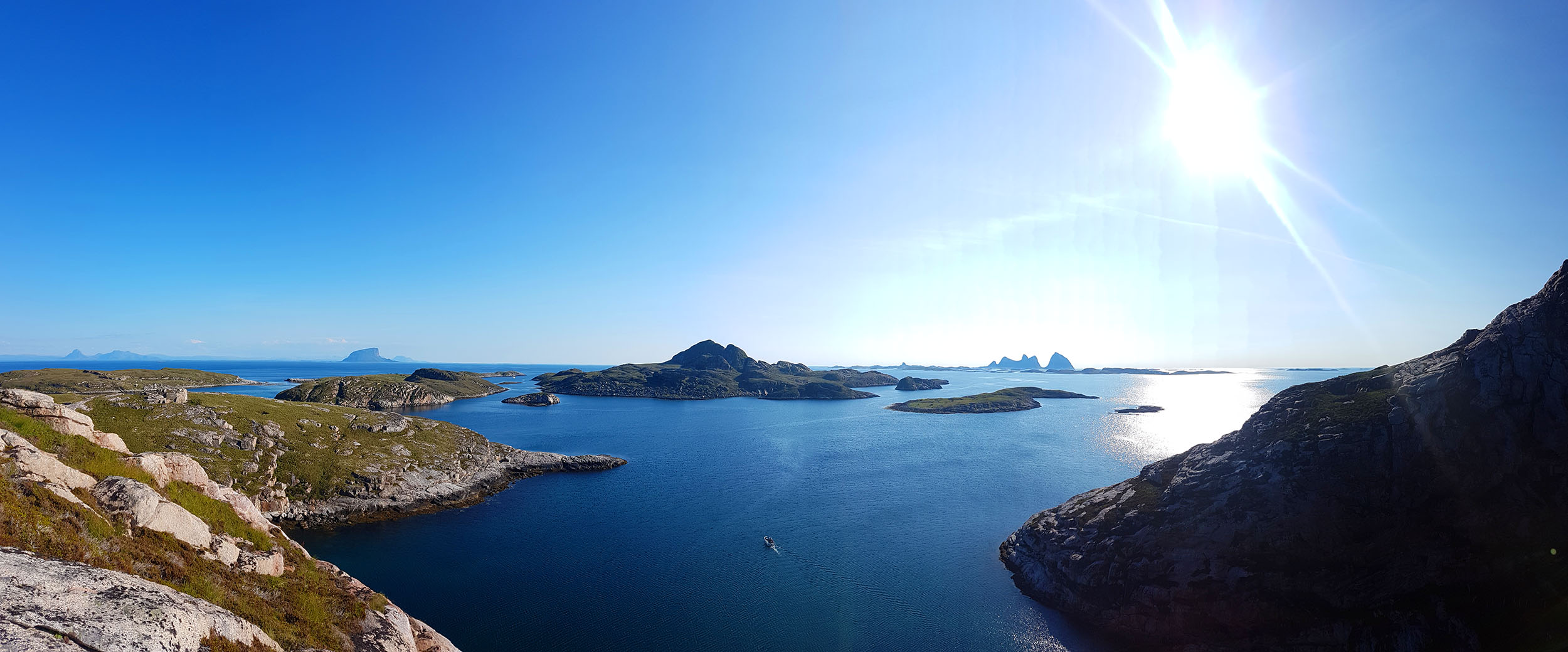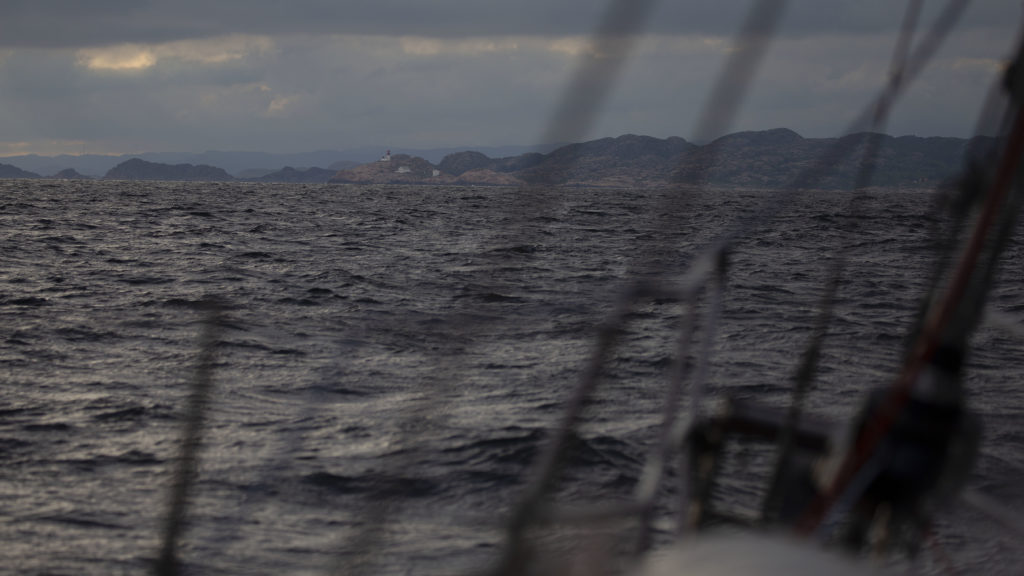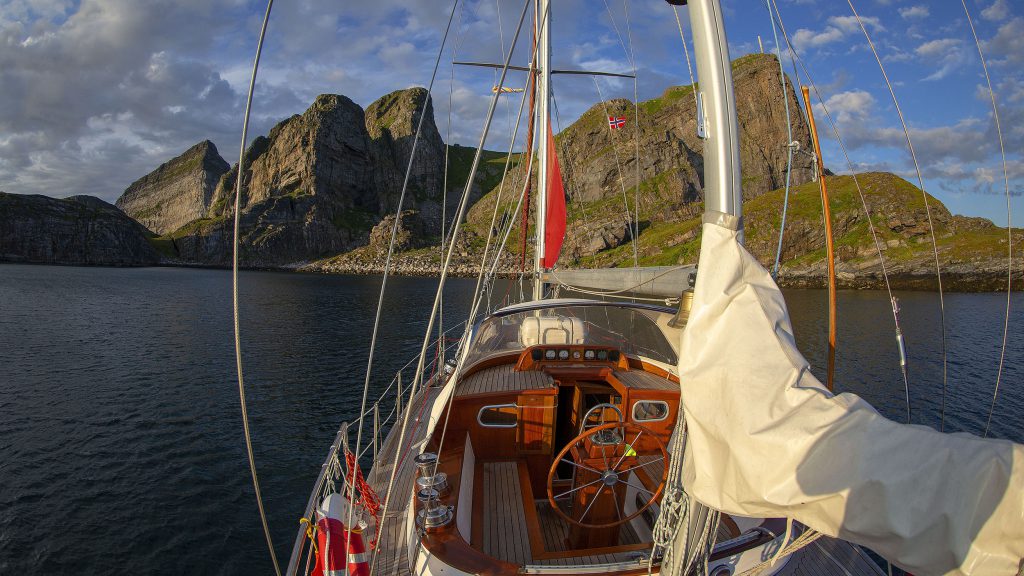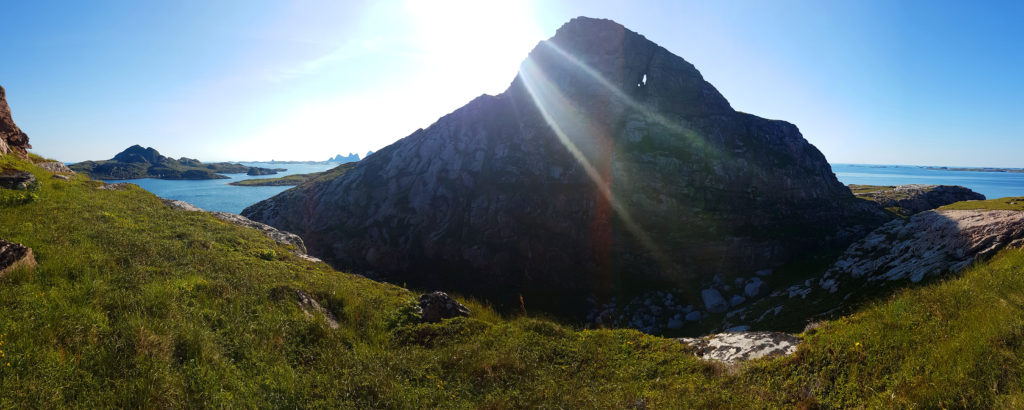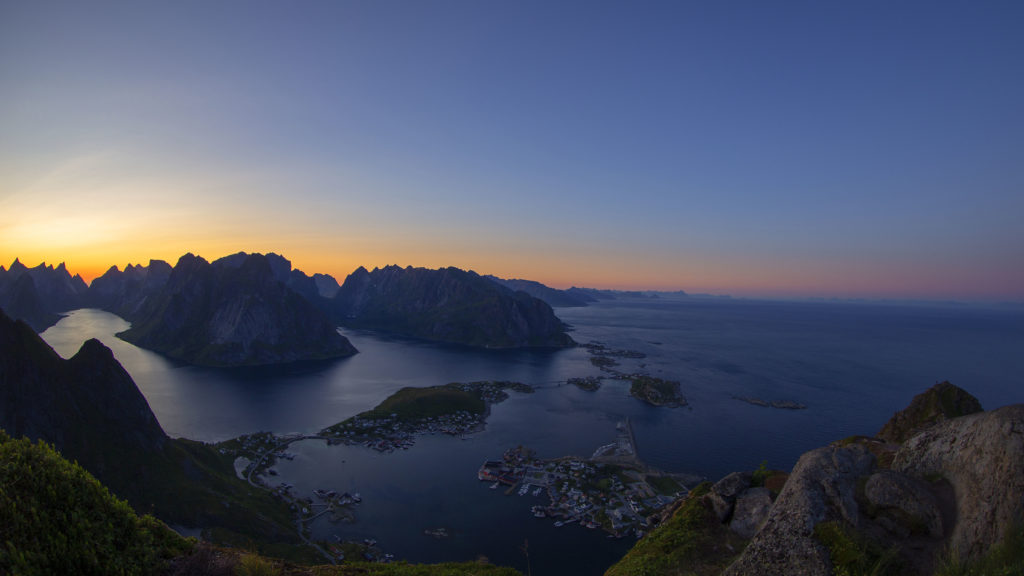Practise blue water sailing: I want to sail long stretches in a row, anchor or let the ship drift. Only call at harbours, if necessary marinas, when electricity or food is scarce. Northernmost destination this summer are the sperm whales off Vesteraalen / Norway
When I cast off from Burgstaaken, the plotter does not start. It is fifteen years old, the instruction manual too. After some leafing, it seems clear: the internal start battery is empty. It cannot be changed by hand, but is soldered in. The local electronics engineer is suspicious of this thing. Manufacturer Simrad reproachfully declares on the phone that a repair in the summertime takes at least four weeks. I send the plotter to Simrad and ask them to send it to Bodö in Norway. That’s a lot to ask of a so-called service and of course it only works at the second attempt .
Without plotter no Radar. Without Radar preferably no fog. For navigation there are alternatives to the plotter, but none for poor visibility. On mobile phone, tablet and laptop are electronic charts installed. Annoyed I throw off the lines in the evening and start into the sinking sun. Abruptly the mood is rising.
The Danish Islands I’ll sail through without going ashore. At night I lie on lee shores – protected bays are rare. In the Skagerak it begins to smell after the sea. The water turns blue. Southwesterly wind is carrying me to the first land fall: Lillesand / Norway. The batteries are almost empty.
Norway and nautical charts
Did I want Norwegian paper charts up to the Lofot Islands, I would have to buy about 50 charts. A massive investment. So I stay with the electronic charts of Navionics and Open CPN. The Navionics charts are easy to read, the Norway chart of Open CPN I find useless.
Both charts are skinning, Blindleia cannot be sailed with two meters of draught. Blindleia is a natural, narrow, spectacular canal system through the archipelago off Lillesand towards Christianssand. Careful and with bad feelings I’m moving forward. The flat depths indications of the electronic charts prove to be wrong.
Bad luck and luck off the coast
When the wind adheres to rules it would come from the southwest in early summer and northeast in September. Herrings, puffins, gannets, all rely on this rhythm off the Norwegian coast. My trip too.
In fact, this Summer is just the other way around. The wind always comes from the front. Another peculiarity: It almost always blows parallel to the coast. Either you live in the sailing land of milk and honey, or you can strangle yourself against the wind with long tacks to the open sea.
The hour of Ford-Lehman’s six-cylinders beats more often than I like. The water in the diesel tank has not diminished over the winter and is doing its job perfectly: Every ten hours or so the engine dies off, I have to clean the diesel filter or replace them. Luckily, I have this brand new double filter system. In tricky moments you can flip a switch and restart the motor. Ommm.
So I cross, if possible, on the open sea. The wind blows with five Beaufort, the waves are about two and a half meters high. REYKJA stomps and fights its way. Suddenly a loud bang of explosion. The cutter rigg with the furling jib beats like wild in the wind. A skilled sailor would react now. I just stare stunned into disaster. A weld seam on the cutter’s rigg, it turns out later, is broken. I turn REYKJA downwind, catch the wild stay with a rope, tie it to the shroud. Then I haul in the jib and stuff it under deck. After that, I “save” myself with three hours of motoring to the coast. And consider why I didn’t had a Plan B in my head for such a tricky – but foreseeable – moment.
With the luck of the unlucky fellow I get into the archipelago of Traena and can breathe through. Five Groups of islands, less than 500 inhabitants, 20 miles away from the coast. Here are protected anchorages, miniature ports, and a mountain with a hole in the center, like the Martinsloch in the canton of Glarus.
Whales search in front of Vesteraalen
To find the sperm whales near Vesteraalen we parasite on the whale watching tour boats. Once they disappear towards Andenes, we are alone out there. Too alone as it turns out: To find the whales blow with the naked eye in the grey wet clouds turns out to be difficult. The tour boats have microphones on board to hear them showing up. After a few hours, we give up soaked.
Two weeks before the end of the trip, the windlass gives up its spirit. I have to get the anchor out of the blue by hand. Although I anchor as shallow as possible, it is easily 10 to 15 meters deep. I learn the hard way how heavy a 20 kilo anchor and 15 meters of chain are (= 50 kilos): Definitely the sort of work you need a T-shirt for.
Last chance for upgrading
This winter is going to be really expensive. The visit nice of the previous owners in summer gives sad certainty that the rig is probably thirty years old. Definitely too old for an ocean passage. Against the brave resistance of the rigger I also insist on the installation of a silent wind wind generator on the mizzen mast. In addition, there is the maintenance of the engine (injection nozzles), replacement of the stuffing box, impact panes for the large windows of the deck salon, an echo sounder with forward scan for reef passages in the South Pacific. And a much more robust anchor system: the new delta anchor weighs 32 kilos (instead of 20 kg), the Lewmar V 4 anchor winch works with 1500 watts (instead of 700 W), the new chain is 70 meters long (instead of 45 m). The boat seems to be ready. And there comes the Corona virus.

